-
 Bitcoin
Bitcoin $106,754.6083
1.33% -
 Ethereum
Ethereum $2,625.8249
3.80% -
 Tether USDt
Tether USDt $1.0001
-0.03% -
 XRP
XRP $2.1891
1.67% -
 BNB
BNB $654.5220
0.66% -
 Solana
Solana $156.9428
7.28% -
 USDC
USDC $0.9998
0.00% -
 Dogecoin
Dogecoin $0.1780
1.14% -
 TRON
TRON $0.2706
-0.16% -
 Cardano
Cardano $0.6470
2.77% -
 Hyperliquid
Hyperliquid $44.6467
10.24% -
 Sui
Sui $3.1128
3.86% -
 Bitcoin Cash
Bitcoin Cash $455.7646
3.00% -
 Chainlink
Chainlink $13.6858
4.08% -
 UNUS SED LEO
UNUS SED LEO $9.2682
0.21% -
 Avalanche
Avalanche $19.7433
3.79% -
 Stellar
Stellar $0.2616
1.64% -
 Toncoin
Toncoin $3.0222
2.19% -
 Shiba Inu
Shiba Inu $0.0...01220
1.49% -
 Hedera
Hedera $0.1580
2.75% -
 Litecoin
Litecoin $87.4964
2.29% -
 Polkadot
Polkadot $3.8958
3.05% -
 Ethena USDe
Ethena USDe $1.0000
-0.04% -
 Monero
Monero $317.2263
0.26% -
 Bitget Token
Bitget Token $4.5985
1.68% -
 Dai
Dai $0.9999
0.00% -
 Pepe
Pepe $0.0...01140
2.44% -
 Uniswap
Uniswap $7.6065
5.29% -
 Pi
Pi $0.6042
-2.00% -
 Aave
Aave $289.6343
6.02%
What does the loss of the five-day line mean? Signs of short-term trend change
A drop below the five-day moving average in crypto trading may signal weakening momentum and a potential short-term trend reversal, especially if confirmed by volume and other indicators.
Jun 16, 2025 at 07:22 am
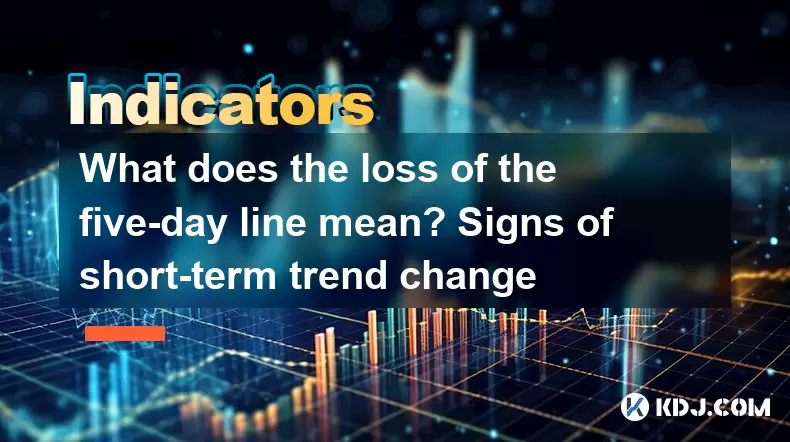
Understanding the Five-Day Line in Cryptocurrency Trading
In cryptocurrency trading, the five-day line, also known as the 5-day moving average (MA), is a commonly used technical indicator that helps traders understand short-term price trends. It represents the average closing price of an asset over the last five days and is plotted on charts to provide dynamic support or resistance levels. Traders closely monitor this line because its behavior can signal potential trend reversals or continuations.
When a cryptocurrency's price drops below the five-day line after a period of uptrend, it may indicate weakening momentum. This is especially significant when the price remains below the line for consecutive sessions. The five-day line acts as a real-time reflection of market sentiment, and its breach can suggest that sellers are gaining control over buyers in the short term.
What Does It Mean When the Five-Day Line Is Lost?
Losing the five-day line means the current price of the asset has fallen below its 5-day average. In practical terms, this signals that recent selling pressure has overwhelmed buying interest. For short-term traders, especially those who rely on momentum strategies, this is often seen as a red flag.
- A single candlestick closing below the five-day line might not be enough to confirm a reversal.
- However, if two or more candles close below this level, it could point to a shift in momentum.
- Volume during these breakouts plays a crucial role — high volume adds credibility to the move.
This phenomenon is particularly important in volatile markets like crypto, where rapid changes in direction can occur within hours. Losing the five-day line may serve as an early warning sign before larger moving averages, such as the 20-day or 50-day MA, reflect similar bearish behavior.
Identifying Short-Term Trend Changes Using the Five-Day Line
To identify a possible trend change using the five-day line, traders should look for specific patterns around this key level. Here’s how to approach it:
- Watch for a clear and decisive close below the five-day line after a sustained rally.
- Observe whether subsequent candles fail to reclaim the line, indicating continued weakness.
- Analyze other indicators such as RSI or MACD to confirm bearish divergence or momentum loss.
A common scenario involves a rising wedge pattern forming near the top of a rally, followed by a breakdown below the five-day line. If accompanied by increasing volume and bearish candlesticks like engulfing patterns, the probability of a trend reversal increases significantly.
Traders should also pay attention to how the price reacts after breaking below the five-day line. If it gets rejected each time it tries to retest the line from below, it reinforces the idea that the short-term trend has turned bearish.
Combining the Five-Day Line With Other Indicators
Relying solely on the five-day line can lead to false signals, especially in choppy or sideways markets. Therefore, it’s essential to combine it with other tools to filter out noise and improve accuracy.
- Use the Relative Strength Index (RSI) to check for overbought or oversold conditions. If the price breaks below the five-day line while RSI is above 70, it strengthens the bearish case.
- Monitor the MACD histogram for contraction or crossover signals that align with the breakdown.
- Incorporate volume analysis — a sharp increase in volume during the drop below the five-day line confirms institutional or large trader participation.
By layering multiple indicators, traders can avoid premature exits or entries based only on one signal. The goal is to build a robust framework that increases confidence in identifying genuine trend changes.
How to React When the Five-Day Line Is Broken
Once the five-day line is broken, traders must decide whether to hold, sell, or even short the asset. Here are some steps to consider:
- Reassess your trade setup: If you were long and the five-day line is now acting as resistance, it might be time to take partial profits or tighten stop losses.
- Consider scaling into shorts if other indicators align with the bearish signal.
- Wait for a retest of the five-day line from below; if the price is rejected again, it validates the new downtrend.
It’s important to remember that not every break below the five-day line leads to a major reversal. Sometimes it's just a temporary pullback. Hence, patience and confirmation are key to avoiding impulsive decisions.
Frequently Asked Questions
Q: Can the five-day line be used for all cryptocurrencies?
Yes, the five-day line can be applied to any cryptocurrency chart regardless of market cap or volatility. However, it tends to be more effective in actively traded assets where price action is less prone to manipulation.
Q: Should I always exit my position when the five-day line is broken?
Not necessarily. Depending on your strategy and risk tolerance, you may choose to reduce exposure rather than fully exit. Always evaluate the broader context before making a decision.
Q: How does the five-day line differ from the 10-day or 20-day moving average?
The five-day line is more sensitive to price changes compared to longer-period moving averages. It provides quicker signals but is also more prone to false breakouts. Longer MAs offer smoother trends but lag behind price movements.
Q: Can the five-day line act as support during an uptrend?
Absolutely. During strong uptrends, the five-day line often serves as a dynamic support level where traders look to buy dips. If the price consistently holds above this line, it reinforces bullish momentum.
Disclaimer:info@kdj.com
The information provided is not trading advice. kdj.com does not assume any responsibility for any investments made based on the information provided in this article. Cryptocurrencies are highly volatile and it is highly recommended that you invest with caution after thorough research!
If you believe that the content used on this website infringes your copyright, please contact us immediately (info@kdj.com) and we will delete it promptly.
- 2025-W Uncirculated American Gold Eagle and Dr. Vera Rubin Quarter Mark New Products
- 2025-06-13 06:25:13
- Ruvi AI (RVU) Leverages Blockchain and Artificial Intelligence to Disrupt Marketing, Entertainment, and Finance
- 2025-06-13 07:05:12
- H100 Group AB Raises 101 Million SEK (Approximately $10.6 Million) to Bolster Bitcoin Reserves
- 2025-06-13 06:25:13
- Galaxy Digital CEO Mike Novogratz Says Bitcoin Will Replace Gold and Go to $1,000,000
- 2025-06-13 06:45:13
- Trust Wallet Token (TWT) Price Drops 5.7% as RWA Integration Plans Ignite Excitement
- 2025-06-13 06:45:13
- Ethereum (ETH) Is in the Second Phase of a Three-Stage Market Cycle
- 2025-06-13 07:25:13
Related knowledge
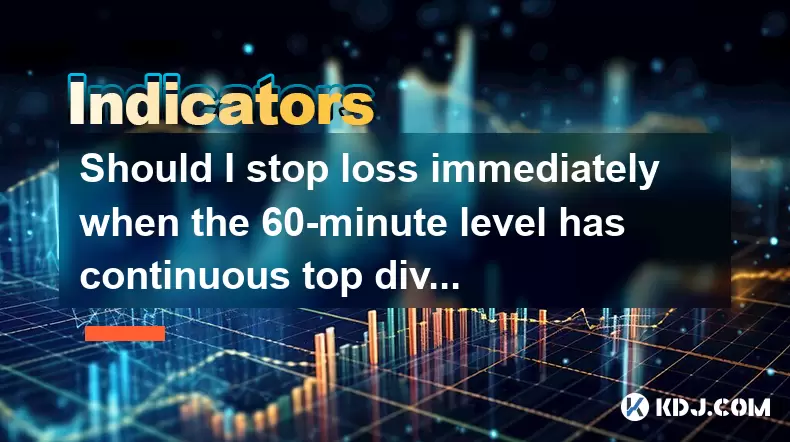
Should I stop loss immediately when the 60-minute level has continuous top divergence?
Jun 17,2025 at 05:28pm
Understanding Top Divergence in the 60-Minute ChartIn cryptocurrency trading, top divergence refers to a technical signal where the price of an asset makes higher highs while the indicator (often RSI or MACD) makes lower lows. This is commonly interpreted as a sign of weakening momentum and potential reversal. When this occurs on the 60-minute chart, it...
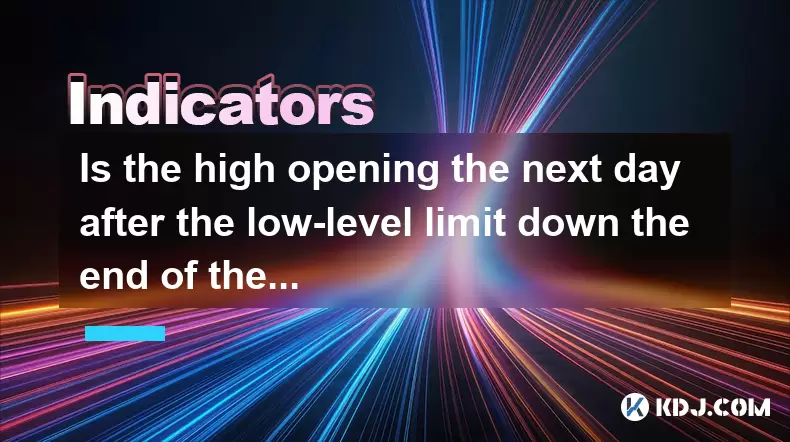
Is the high opening the next day after the low-level limit down the end of the wash?
Jun 17,2025 at 05:57pm
Understanding the Concept of a Limit Down and Its ImplicationsIn the world of cryptocurrency trading, a limit down refers to a situation where the price of a digital asset drops sharply, reaching its maximum allowable decline within a specific time frame. This mechanism is often seen on exchanges that implement daily price limits to prevent excessive vo...
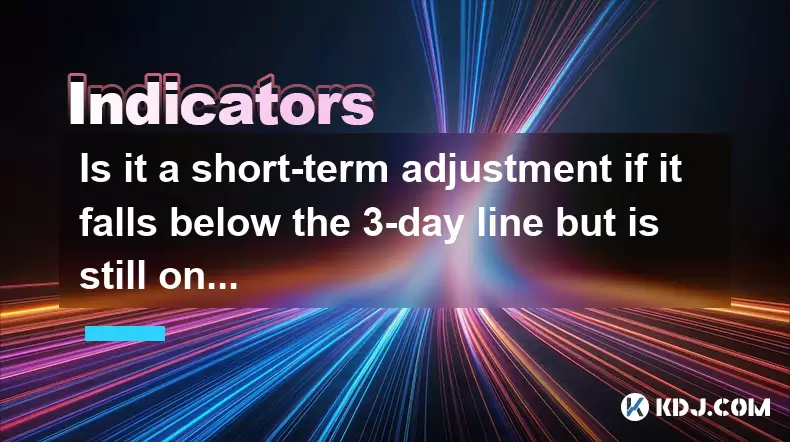
Is it a short-term adjustment if it falls below the 3-day line but is still on the 10-day line?
Jun 17,2025 at 04:07pm
Understanding the 3-Day and 10-Day Moving AveragesIn cryptocurrency trading, moving averages are essential tools for gauging trend strength and potential reversals. The 3-day moving average is a short-term indicator that reflects recent price action with minimal lag, making it highly sensitive to sudden market shifts. In contrast, the 10-day moving aver...
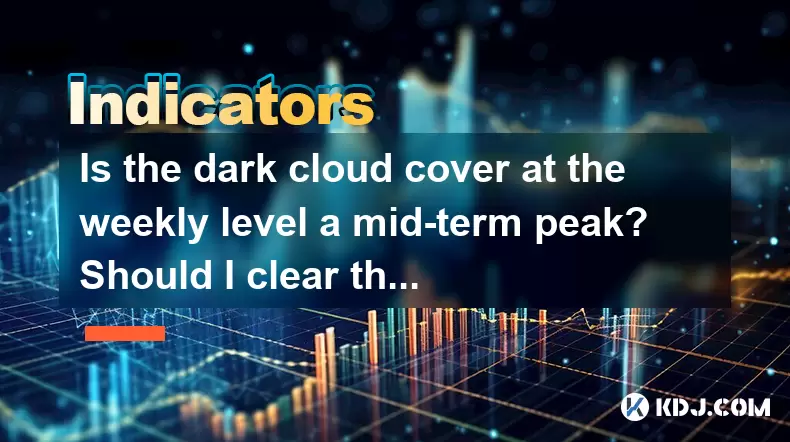
Is the dark cloud cover at the weekly level a mid-term peak? Should I clear the position?
Jun 17,2025 at 02:21pm
Understanding the Dark Cloud Cover PatternThe Dark Cloud Cover is a well-known candlestick pattern used by technical analysts to identify potential trend reversals from bullish to bearish. It typically forms at the end of an uptrend and consists of two candles: the first is a strong bullish (green) candle, followed by a bearish (red) candle that opens h...
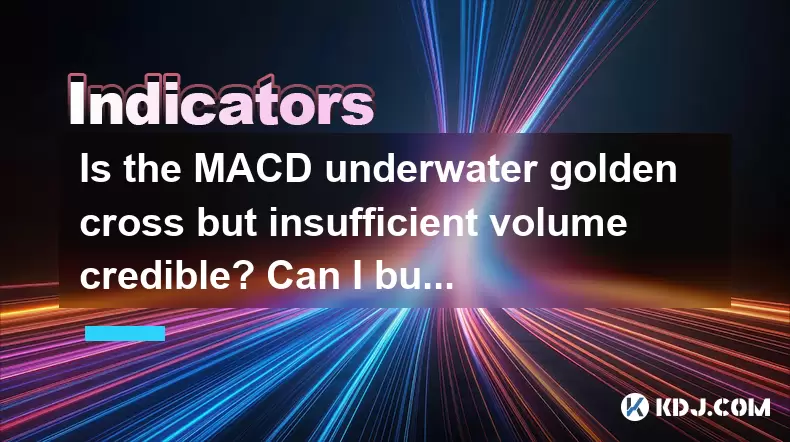
Is the MACD underwater golden cross but insufficient volume credible? Can I buy at the bottom?
Jun 17,2025 at 03:08pm
Understanding the MACD Underwater Golden CrossThe MACD underwater golden cross occurs when the MACD line crosses above the signal line below the zero line, signaling a potential reversal from a downtrend to an uptrend. This phenomenon is often interpreted by traders as a bullish signal, especially in cryptocurrency markets where momentum plays a signifi...
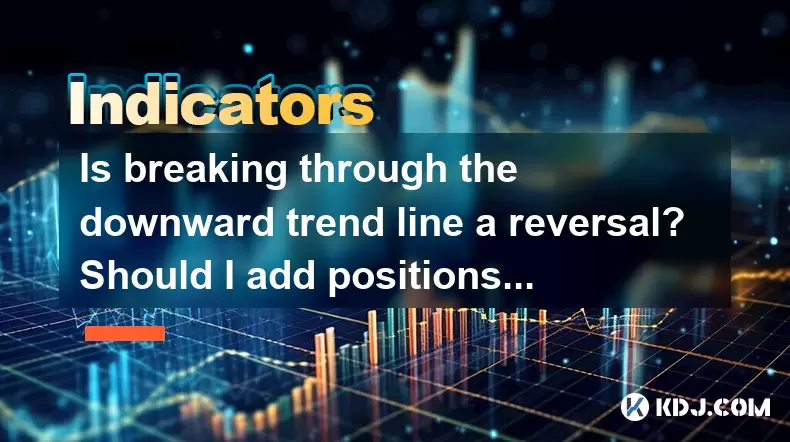
Is breaking through the downward trend line a reversal? Should I add positions?
Jun 17,2025 at 05:22pm
Understanding the Downward Trend Line in Cryptocurrency TradingIn cryptocurrency trading, a downward trend line is drawn by connecting two or more high points on a price chart, indicating a consistent decline in asset value. This line serves as a resistance level, showing that sellers are dominating the market. When the price breaks above this line, it ...

Should I stop loss immediately when the 60-minute level has continuous top divergence?
Jun 17,2025 at 05:28pm
Understanding Top Divergence in the 60-Minute ChartIn cryptocurrency trading, top divergence refers to a technical signal where the price of an asset makes higher highs while the indicator (often RSI or MACD) makes lower lows. This is commonly interpreted as a sign of weakening momentum and potential reversal. When this occurs on the 60-minute chart, it...

Is the high opening the next day after the low-level limit down the end of the wash?
Jun 17,2025 at 05:57pm
Understanding the Concept of a Limit Down and Its ImplicationsIn the world of cryptocurrency trading, a limit down refers to a situation where the price of a digital asset drops sharply, reaching its maximum allowable decline within a specific time frame. This mechanism is often seen on exchanges that implement daily price limits to prevent excessive vo...

Is it a short-term adjustment if it falls below the 3-day line but is still on the 10-day line?
Jun 17,2025 at 04:07pm
Understanding the 3-Day and 10-Day Moving AveragesIn cryptocurrency trading, moving averages are essential tools for gauging trend strength and potential reversals. The 3-day moving average is a short-term indicator that reflects recent price action with minimal lag, making it highly sensitive to sudden market shifts. In contrast, the 10-day moving aver...

Is the dark cloud cover at the weekly level a mid-term peak? Should I clear the position?
Jun 17,2025 at 02:21pm
Understanding the Dark Cloud Cover PatternThe Dark Cloud Cover is a well-known candlestick pattern used by technical analysts to identify potential trend reversals from bullish to bearish. It typically forms at the end of an uptrend and consists of two candles: the first is a strong bullish (green) candle, followed by a bearish (red) candle that opens h...

Is the MACD underwater golden cross but insufficient volume credible? Can I buy at the bottom?
Jun 17,2025 at 03:08pm
Understanding the MACD Underwater Golden CrossThe MACD underwater golden cross occurs when the MACD line crosses above the signal line below the zero line, signaling a potential reversal from a downtrend to an uptrend. This phenomenon is often interpreted by traders as a bullish signal, especially in cryptocurrency markets where momentum plays a signifi...

Is breaking through the downward trend line a reversal? Should I add positions?
Jun 17,2025 at 05:22pm
Understanding the Downward Trend Line in Cryptocurrency TradingIn cryptocurrency trading, a downward trend line is drawn by connecting two or more high points on a price chart, indicating a consistent decline in asset value. This line serves as a resistance level, showing that sellers are dominating the market. When the price breaks above this line, it ...
See all articles

























































































